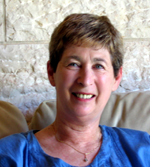By Dorothea Shefer-Vanson

MEVASSERET ZION, Israel — Helena Kagan was born in 1889 in Uzbekistan, where her father, who was originally from Lithuania, had been sent as a chemical engineer to establish and supervise the construction of glass-manufacturing plants there. In 1914, after qualifying as a physician, she settled in Jerusalem and was a pioneer in tending to the health of both Arab and Jewish children, establishing clinics and pediatric centres throughout the region. She died in 1978, having devoted her life to improving the health and welfare of Jerusalem’s children.
Among her spheres of activity was the prevention of juvenile delinquency, and she was instrumental in providing an environment where youngsters could find a positive and supportive atmosphere rather than roaming the streets, providing them with coaching in their school work and thereby reducing delinquency and school drop-out rates.
In 1968, with the aid of Women’s International Zionist Organization (WIZO) UK and the Jerusalem municipality, the Kagan Community Center was established in Jerusalem’s Katamon Tet neighborhood in honor of Dr. Kagan’s seventy-fifth birthday. Within that framework the Kagan Learning Center enables youngsters to spend time in a warm and friendly environment where they can receive help in subjects with which they are having difficulties at school.
When I visited the Centre I found a large, modern, well-lit building, set back from the dingy street in one of Jerusalem’s less salubrious areas. Inside it are rooms in which tutors, some of them volunteers, provide one-on-one teaching for youngsters who are having difficulties at school, as well as a library and a computer room, and a general atmosphere of relaxed and positive activity.
Most of the children attending the Centre today come from families that have immigrated from Ethiopia, where the language used at home is generally not Hebrew, which puts the child at a disadvantage in their first years at school. Much of the work of the Center involves bringing children in line with the level of their peers in basic subjects such as reading, writing and arithmetic, as well as providing them with the basic concepts that are learned by Israeli-born children even before they start school.
The Centre’s devoted teachers and administrator maintain contact with the parents of the children who attend and are always willing to help resolve problems connected with the child’s schooling. The Center originally provided its services to the children of the Katamon neighborhood, many of whose parents had immigrated from the countries of the Maghreb and were unable to provide their children with the headstart that these children often required. Today the children who attend the Centre live in the neighborhood as well as from elsewhere in Jerusalem.
As is usually the case with such institutions, the Centre is chronically short of funds; its basic upkeep is provided by the Jerusalem municipality, but it is the Kagan Fund that pays for its staff and equipment, including computers and enrichment activities. Information about giving is available at its website, http://www.israelgives.org/amuta/580126605.
*
Shefer-Vanson is an author and freelance writer based in the Jerusalem suburb of Mevasseret Zion. This article also appears in the June 2015 issue of the AJR Journal (Association of Jewish Refugees). You may comment directly to the writer at dorothea.shefer@sdjewishworld.com, or post your comment on this website provided that the rules below are observed.
__________________________________________________________________
Your comment should be followed with this information: Your full name, your city and state (or country) of residence. Letters lacking such information will be automatically deleted. San Diego Jewish World is intended as a forum for the entire Jewish community, whatever your political leanings. Letters may be posted below provided they are responsive to the article to which they are affixed, and civil in their tone. Ad hominem attacks against any religion, country, gender, race, sexual orientation, or physical disability will not be considered for publication. There is a limit of one letter per writer on any given day.
__________________________________________________________________